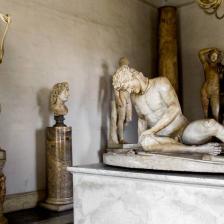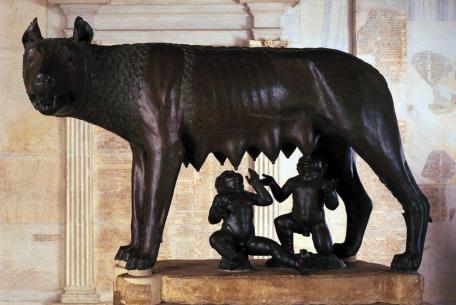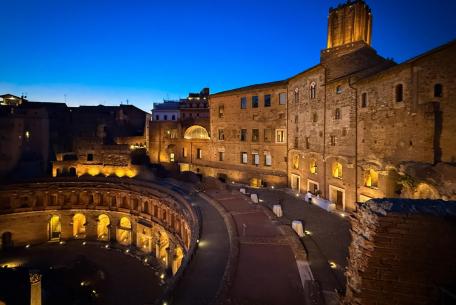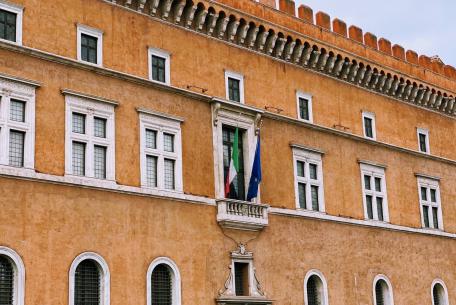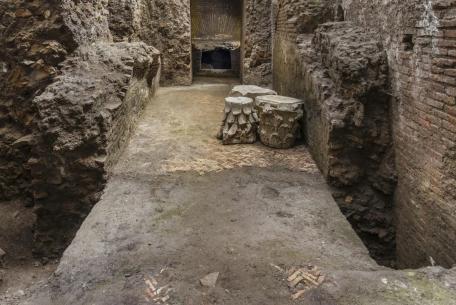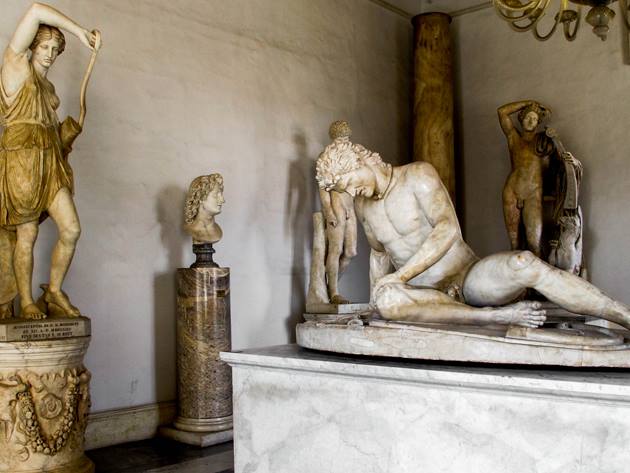
Located at the foot of the Capitoline Hill, Piazza Venezia is one of the most scenic places in Rome, from where some of the main streets of the historic centre depart radially.
Its fascinating geometric shape is characterized by a potpourri of buildings of different architectural styles: the Renaissance Palazzo Venezia, the specular 20th-century Palazzo delle Assicurazioni Generali, the 17th-century Palazzo Bonaparte, house of Napoleon's mother, and the beautiful Basilica of San Marco, all dominated by the whiteness of the majestic Vittoriano.
The square is a popular tourist destination and an obligatory point of passage for a suggestive walk in via dei Fori Imperiali, a photograph of the famous bust of Madama Lucrezia, one of the Talking Statues of Rome, a visit to the Mouth of Truth or a day for shopping in the lively via del Corso, perhaps after throwing a coin in the nearby Trevi Fountain or having a coffee in one of the coffee bars of the Trident.
Famous all over the world for its history and for being the location for many films, Piazza Venezia hosts in its surroundings some of the most spectacular art sites of Rome and the world.
Our itinerary leads you to discover four prestigious museums near this monumental square.
Musei Capitolini
Located on the magnificent Piazza del Campidoglio designed by Michelangelo, the Capitoline Museums are housed in Palazzo dei Conservatori and Palazzo Nuovo. The two buildings are connected by the underground Galleria Lapidaria which leads to the Tabularium, home to the archives in the Roman age.
They are the oldest public museum in the world, whose collection was born thanks to the donation of 1471 by Sixtus IV of some works previously kept in the Lateran. The museums were enriched over time by finds from archaeological excavations, from the Vatican or specially purchased collections, such as the prestigious Albani collection.
Inaugurated in 1734, Palazzo Nuovo welcomes the visitors with the spectacular courtyard and the fountain of Marforio, a Roman work from the 2nd century AD., and one of the famous Talking Statues.
Inside there are valuable ancient sculptures, mostly from private collections of prelates and noble Roman families: busts of philosophers, imperial portraits, Egyptian statues, and famous artworks such as the Dying Gaul and the Capitoline Venus, together with remarkable epigraphic documents.
Palazzo dei Conservatori, intended as a museum in 1876, houses numerous bronze sculptures, such as the Capitoline Wolf, the Spinario and the Capitoline Brutus. Its apartments, inside which there is Bernini's suggestive bust of Medusa, are decorated with splendid cycles of frescoes from the 16th-17th centuries, relating to the ancient history of Rome.
On the first floor, a large glass room houses the imposing bronze equestrian statue of Marcus Aurelius and the remains of the temple of Jupiter Capitoline. On the second floor is the Pinacoteca Capitolina, which houses masterpieces by artists such as Titian, Caravaggio, Rubens, Annibale Carracci, Tintoretto and Guido Reni.
The Capitoline Museums also have a valuable collection of jewels, coins and medals, kept in Palazzo Caffarelli-Clementino.
Mercati di Traiano - Museo dei Fori Imperiali
A spectacular and evocative "window" on the Imperial Fora, Trajan's Markets represent a "neighbourhood" that has experienced the evolution of the city, from the imperial age to the present day: from a strategic administrative centre of the Imperial Fora to a noble residence, then a military fortress, a prestigious convent seat, and a barracks.
They represent the first museum of ancient architecture, simultaneously telling the evolution of Roman architecture and the history of the city, through the connection between the complex and the archaeological area of the Fora.
The Museum occupies the buildings of the Great Hall and the Central Body and includes the Great Hemicycle with the section of the Trajan's Forum. Dedicated to the sculptural-architectural decoration of the Fora, it also aims to address the construction aspects and to restore the original "final" vision of the buildings.
It exhibits recompositions of the architectural and sculptural decoration of the Imperial Fora, obtained with original fragments, casts and modular stone integrations, accompanied by traditional panels and multimedia technologies.
On the ground floor of the Great Hall, a multimedia system introduces visitors to the Forums area; some rooms are dedicated to the forums, each of them symbolized by a relevant finding. On the upper floor are the two sections related to the Forum of Caesar and the "Memory of the Ancient". The Central Body is dedicated to the architectural-sculptural decoration of the arcades, the exedras and the hall of the Colossus of the Forum of Augustus.
Museo Nazionale del Palazzo di Venezia
This prestigious museum is housed in the palace once an opulent residence by Pietro Barbo, Cardinal of the adjacent Basilica of S. Marco, later pontiff with the name of Paul II (1464-71).
The building, recovered from Austria, was chosen as the seat of a large national museum of medieval and Renaissance art in 1916, with the objects from the dispersed Kircherian Museum, the National Gallery of Ancient Art and the collections collected at Castel Sant'Angelo for the International Art Exhibition of 1911. Arms, medieval and Renaissance paintings, wooden sculptures and works of sacred gold smithery were later added.
The first setting dates back to 1921, followed by a brief, second setting in 1929 when the palace was chosen by Benito Mussolini as the seat of the Head of Government. After the war, following substantial legacies and numerous public and private donations, the Museum of Palazzo di Venezia gradually defined its characteristics as a great Museum of Applied Arts.
Today, the collection includes paintings of the 15th-18th centuries; 18th-century pastels on paper; Italian and German wooden sculptures; western and eastern porcelains; ceramics; bronzes; marbles and terracottas; ancient weapons and armours; a rich collection of fabrics such as tapestries and rugs, headgears, laces; wrought irons and furniture; painted glass, ivories, silver and enamels. It also hosts masterpieces by artists such as Bernini, Algardi, Pietro Bracci, Giorgione, Guido Reni and Guercino.
Museo Nazionale Romano - Crypta Balbi
Along Via delle Botteghe Oscure, located between Largo Argentina, the nearby Jewish Ghetto and the archaeological area of Teatro di Marcello, there is the Crypta Balbi, one of the seats of the National Roman Museum, with Palazzo Massimo alle Terme, Palazzo Altemps and the Baths of Diocletian.
Housed in some rooms of the complex built from the Middle Ages - on the remains of the arcaded courtyard connected to the theatre erected by Lucio Cornelio Balbo in 13 BC. - it is the first urban archaeology museum that documents the evolution of an entire block of the historic centre of Rome over the centuries.
The itinerary is divided into the different buildings that have followed one another during the various historical phases. On the ground floor, the story of the complex is told from antiquity to the 20th century. The first floor is dedicated to houses and shops of the Roman age. The second floor displays the transformations of the city from the 4th to the 9th century, with many artefacts found from the excavations in the Crypta, from other archaeological researches in Rome and historical collections of Roman museums.
In the suggestive underground, it is possible to visit the archaeological remains found in the cellars of the buildings on via delle Botteghe Oscure. In the external archaeological area, you can admire the monumental remains of the exedra of the Crypta Balbi and of the neighbourhood that stands behind it.
 Condividi
Condividi












































